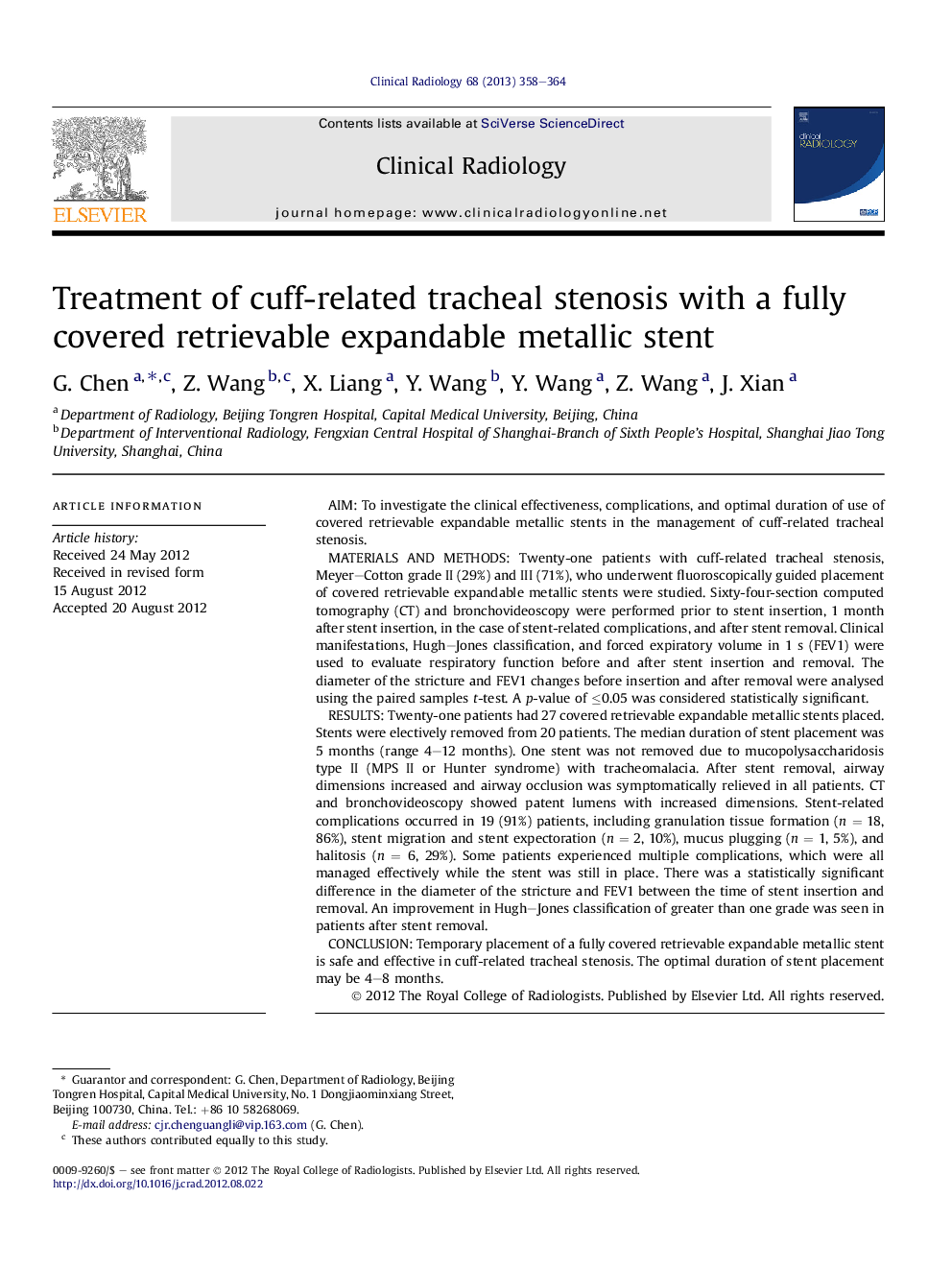| Article ID | Journal | Published Year | Pages | File Type |
|---|---|---|---|---|
| 3981601 | Clinical Radiology | 2013 | 7 Pages |
AimTo investigate the clinical effectiveness, complications, and optimal duration of use of covered retrievable expandable metallic stents in the management of cuff-related tracheal stenosis.Materials and methodsTwenty-one patients with cuff-related tracheal stenosis, Meyer–Cotton grade II (29%) and III (71%), who underwent fluoroscopically guided placement of covered retrievable expandable metallic stents were studied. Sixty-four-section computed tomography (CT) and bronchovideoscopy were performed prior to stent insertion, 1 month after stent insertion, in the case of stent-related complications, and after stent removal. Clinical manifestations, Hugh–Jones classification, and forced expiratory volume in 1 s (FEV1) were used to evaluate respiratory function before and after stent insertion and removal. The diameter of the stricture and FEV1 changes before insertion and after removal were analysed using the paired samples t-test. A p-value of ≤0.05 was considered statistically significant.ResultsTwenty-one patients had 27 covered retrievable expandable metallic stents placed. Stents were electively removed from 20 patients. The median duration of stent placement was 5 months (range 4–12 months). One stent was not removed due to mucopolysaccharidosis type II (MPS II or Hunter syndrome) with tracheomalacia. After stent removal, airway dimensions increased and airway occlusion was symptomatically relieved in all patients. CT and bronchovideoscopy showed patent lumens with increased dimensions. Stent-related complications occurred in 19 (91%) patients, including granulation tissue formation (n = 18, 86%), stent migration and stent expectoration (n = 2, 10%), mucus plugging (n = 1, 5%), and halitosis (n = 6, 29%). Some patients experienced multiple complications, which were all managed effectively while the stent was still in place. There was a statistically significant difference in the diameter of the stricture and FEV1 between the time of stent insertion and removal. An improvement in Hugh–Jones classification of greater than one grade was seen in patients after stent removal.ConclusionTemporary placement of a fully covered retrievable expandable metallic stent is safe and effective in cuff-related tracheal stenosis. The optimal duration of stent placement may be 4–8 months.
